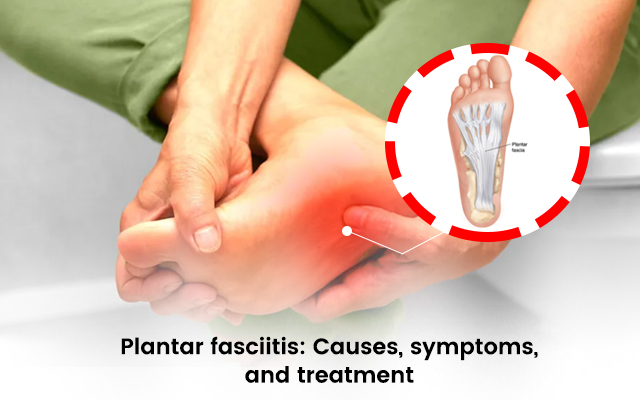Plantar fasciitis is characterized by inflammation and irritation of one’s plantar fascia, a thick band of tissue. It runs along the foot, connecting the heel bone to the toes. This condition can contribute to intense pain and discomfort. Learn about its causes, symptoms, and treatments from an orthopedic doctor in Rajarhat, Newtown.
Causes
1. Overuse and repetitive strain: Activities that involve repetitive impact on the feet, including running, dancing, or standing for long periods, can put excessive stress on the plantar fascia, leading to inflammation and micro-tears.
2. Foot structure: Certain foot types, such as flat feet or high arches, could contribute to an uneven distribution of weight on the feet, putting additional strain on the plantar fascia, says an orthopedic surgeon in Newtown.
3. Tight calf muscles: Tightness in the calf muscles can affect the flexibility of the Achilles tendon, which in turn affects the mechanics of the foot and other places, increasing stress on the plantar fascia.
4. Ill-fitting footwear: Wearing shoes with inadequate arch support, cushioning, or improper fit can increase the risk of developing this condition.
Symptoms
1. Heel pain: The most common symptom is a sharp and stabbing pain in the heel. The pain is often more pronounced in the morning or after periods of inactivity, and it tends to improve with movement.
2. Pain during activities: Activities that involve weight-bearing on the foot, such as walking or running, can exacerbate the pain. Prolonged standing or walking on hard surfaces might also worsen the symptoms.
3. Stiffness: Many individuals with plantar fasciitis experience stiffness and discomfort in the foot, especially upon waking up or after long periods of rest.
Treatments
1. Stretching exercises: Gentle stretching exercises for the plantar fascia and calf muscles can help improve flexibility and alleviate symptoms. Examples include calf stretches, toe stretches, and towel stretches.
2. Orthotic devices: Shoe inserts or orthotic devices can provide support and cushioning to the foot, relieving pressure on the plantar fascia.
3. Physical therapy: An orthopedic doctor can guide you through exercises to strengthen the muscles of the foot and ankle, improve flexibility, and correct any biomechanical imbalances.
4. Nonsteroidal anti-inflammatory drugs (NSAIDs): Over-the-counter pain relievers, like ibuprofen or naproxen, can lower pain and inflammation associated with plantar fasciitis.
5. Corticosteroid injections: In some cases, corticosteroid injections may be recommended to reduce inflammation and provide temporary relief from pain. However, these injections are typically used sparingly due to potential side effects.
As per an orthopedic doctor in Rajarhat, Newtown, by understanding the causes, recognizing the symptoms, and implementing appropriate treatment strategies, individuals can effectively manage and overcome plantar fasciitis.







